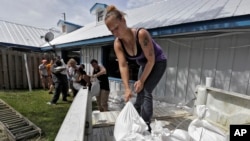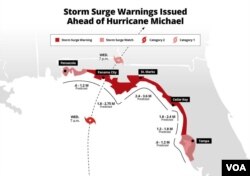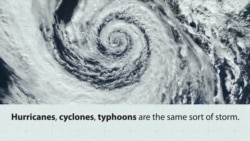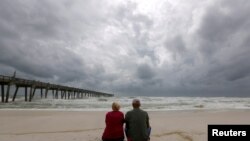Hurricane Michael rapidly strengthened Wednesday morning, as forecasters warned people in the southern U.S. state of Florida to be ready for the full impact of "extremely dangerous" Hurricane Michael.
The National Hurricane Center said the storm's maximum sustained winds increased Wednesday morning to 245 kilometers per hour, making it a powerful Category 4 hurricane.
Michael threatens to become the most powerful hurricane on record to hit the Florida Panhandle, which is the northwestern part of the state. The hurricane is expected to make landfall with the same strength Wednesday afternoon, a development that has never happened since records started being kept in 1851.
The storm's outer rain bands were soaking the Florida Panhandle early Wednesday as the center of the storm moved closer to its expected afternoon landfall.
Forecasters said it could gain even more strength in the warm waters of the Gulf of Mexico before reaching land.
Storm surge danger
In addition to the powerful winds, Michael is also bringing the threat of dangerous storm surge that could exceed four meters in some places.
Rainfall is expected to total 10 to 20 centimeters in parts of Florida, Alabama and Georgia during the next few days, and up to 30 centimeters in isolated areas of those states.
Evacuation order
Florida Governor Rick Scott issued a series of tweets late Tuesday and early Wednesday imploring people in his state to evacuate coastal areas and remain safe during the storm.
"I'm asking all Floridians to stay vigilant throughout tonight and tomorrow as we brace for Hurricane Michael to make landfall," Scott said.
President Donald Trump said federal emergency officials are standing by to help with recovery efforts.
The National Hurricane Center said Michael is the first major storm to hit the Florida Panhandle since Hurricane Dennis in 2005.
The storm will drift into the Mid-Atlantic States and out to sea by Friday.
WATCH: Explainer - What is a Hurricane?
Central America, Cuba
Michael is striking the United States after having soaked parts of Central America and Cuba with heavy rains, causing flooding and knocking out power.
At least 13 storm-related deaths have been reported in El Salvador, Honduras and Nicaragua.












